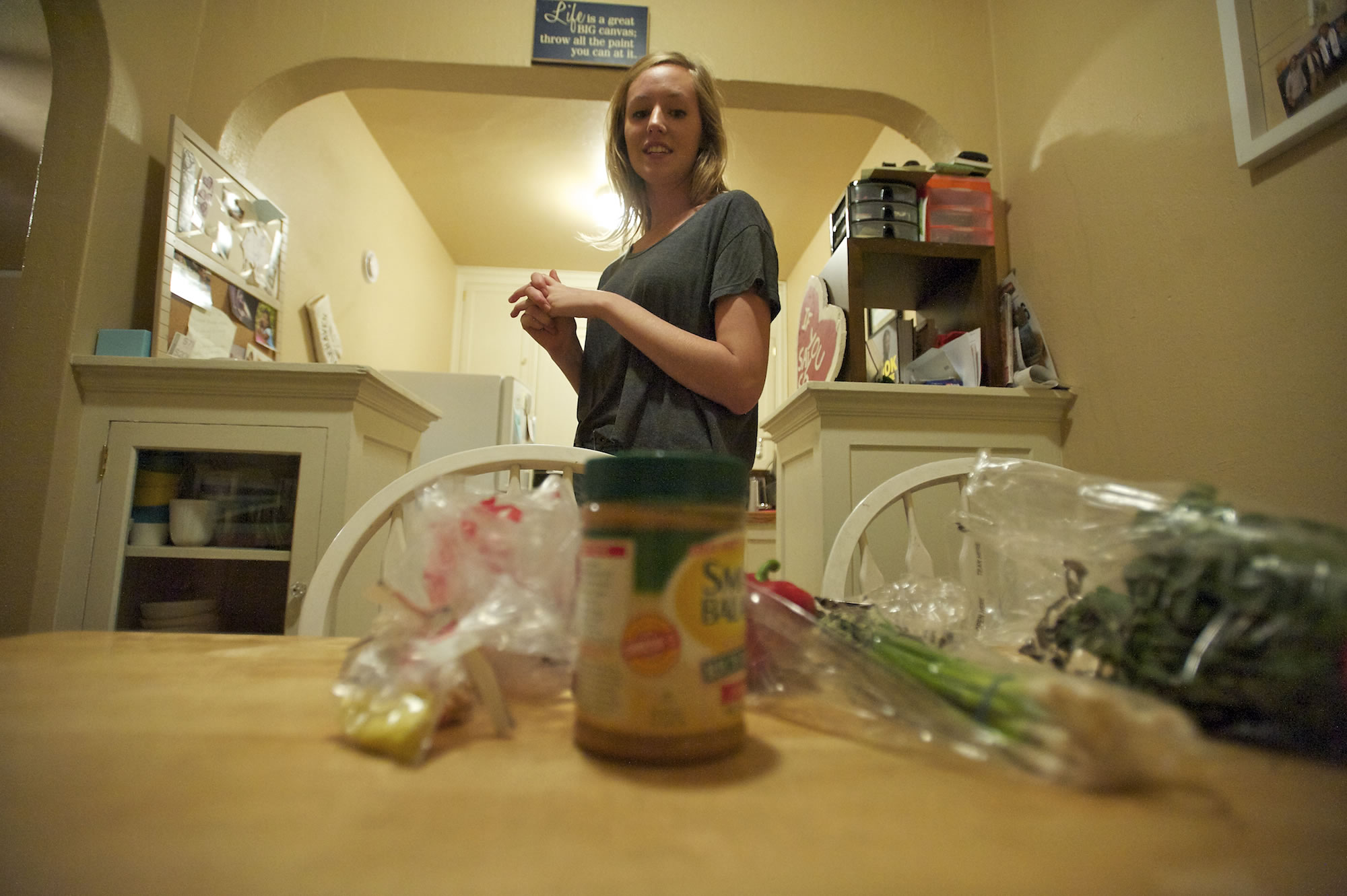What: “Homeless and Hungry in Clark County: Get the Facts,” a free brown-bag event focusing on local poverty.
When: 11:30 a.m. to 1 p.m. Thursday.
Where: Vancouver Community Library, 901 C St.
Who: Speaking will be Amy Reynolds and Katherine Garrett of Share; Andy Silver of the Council for the Homeless; Alan Hamilton of the Clark County Food Bank; and Eric Olmsted of the Rotary Club of Vancouver.
Did you know?
The nonprofit agencies mentioned in this story are always eager for volunteers and donations. They are: Share; the Clark County Food Bank; and the Council for the Homeless.
Audrey and Connor Williams are living on a food budget of $8 a day. For both of them.
What: "Homeless and Hungry in Clark County: Get the Facts," a free brown-bag event focusing on local poverty.
When: 11:30 a.m. to 1 p.m. Thursday.
Where: Vancouver Community Library, 901 C St.
Who: Speaking will be Amy Reynolds and Katherine Garrett of Share; Andy Silver of the Council for the Homeless; Alan Hamilton of the Clark County Food Bank; and Eric Olmsted of the Rotary Club of Vancouver.
The young couple has accepted the SNAP Challenge, a weeklong exercise in living on food stamps. SNAP stands for Supplemental Nutrition Assistance Program. It pays a little over $4 per person per day for basic groceries. It doesn’t cover hot or prepared foods.
“If we’re talking the talk, we should be able to walk the walk,” said Audrey, a nutrition educator and AmeriCorps worker at the Clark County Food Bank. She’s one of the many members of the staff and board of directors of the food bank — plus their friends and fans — who are participating in a pilot SNAP Challenge this week. Next year, food bank director Alan Hamilton said, the food bank plans to go communitywide with the challenge.
It’s in observance of National Hunger and Homeless Awareness Week, which runs from Nov. 10 to 18.
Speaking during a free brown-bag event will be a number of local poverty experts and activists, including Amy Reynolds and Katherine Garrett from Share; Andy Silver from the Council for the Homeless; and Hamilton of the Clark County Food Bank.
Also speaking will be Rotary Club of Vancouver President Eric Olmsted, who will describe the day he spent on the street with a homeless client of Share’s Outreach program.
“It was a life-transforming day,” Olmsted said. “Most people think they know what it’s like to be homeless, but the reality is much bleaker.”
Stretching SNAP
The Williamses are both 22 and recent graduates of Seattle Pacific University. Connor has a degree in ecology and is hunting for work; Audrey is drawing AmeriCorps’ nominal stipend. So SNAP’s limited budget is not too far below their actual station in life right now.
On the menu in their tiny downtown apartment last Friday night was homemade peanut and sweet potato soup, an African recipe that Audrey pulled from the SNAP recipe finder, an online clearinghouse at recipefinder.nal.usda.gov. The site allows users to browse recipes in many ways, from alphabetic to geographic, or plug in diet or budget restrictions.
This is one of the ways the SNAP program is both healthy and handy, said Audrey, whose mission at the food bank is teaching clients to stretch their dollars while cooking more healthfully. She also likes to point out that SNAP offers an electronic bank card, so clients can go shopping without suffering the stigma of paying at the register with actual food stamps. The card is growing popular with local farmers markets, she said.
Nonetheless, Audrey added: “One of the most challenging aspects of SNAP is actually going to the grocery store and buying what you are going to use” — and only what you are going to use, in very specific and sometimes microscopic amounts. Like the pinch of spices and the little bit of bouillon she wanted for the African soup. That’s why she recommends stores that have bulk sections, where you can bag up only what you want, and no more, for a reasonable price.
Can an adult really subsist on $4 of groceries per day? Not really, Audrey admitted. That’s why so many SNAP clients turn to emergency sources, like food banks, toward the end of each month: because their SNAP benefits have run out, she said.
The protein in her African soup recipe comes from the peanuts — no meat. “We’ll see how this turns out for Connor,” said Audrey, a little skeptically.
There were 46.7 million Americans on the SNAP program in July 2012, according to the Food Research & Action Center, and 1.1 million in Washington state. Most states’ SNAP clientele has been going up in recent years; Washington is one of the few states where the number has crept downward slightly. According to the Food Bank, there are 38,054 SNAP clients in Clark County.




